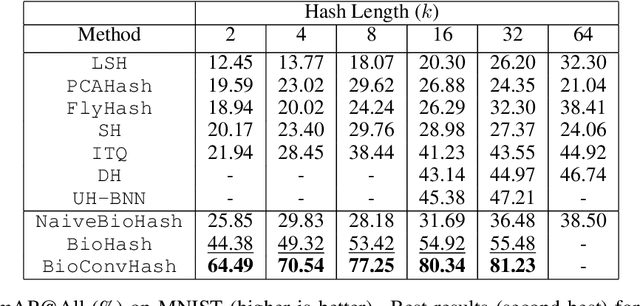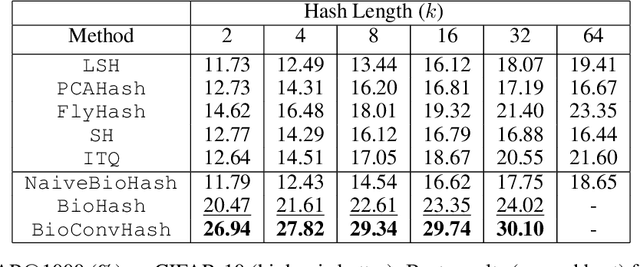Bio-Inspired Hashing for Unsupervised Similarity Search
Paper and Code
Jan 14, 2020



The fruit fly Drosophila's olfactory circuit has inspired a new locality sensitive hashing (LSH) algorithm, FlyHash. In contrast with classical LSH algorithms that produce low dimensional hash codes, FlyHash produces sparse high-dimensional hash codes and has also been shown to have superior empirical performance compared to classical LSH algorithms in similarity search. However, FlyHash uses random projections and cannot learn from data. Building on inspiration from FlyHash and the ubiquity of sparse expansive representations in neurobiology, our work proposes a novel hashing algorithm BioHash that produces sparse high dimensional hash codes in a data-driven manner. We show that BioHash outperforms previously published benchmarks for various hashing methods. Since our learning algorithm is based on a local and biologically plausible synaptic plasticity rule, our work provides evidence for the proposal that LSH might be a computational reason for the abundance of sparse expansive motifs in a variety of biological systems. We also propose a convolutional variant BioConvHash that further improves performance. From the perspective of computer science, BioHash and BioConvHash are fast, scalable and yield compressed binary representations that are useful for similarity search.
 Add to Chrome
Add to Chrome Add to Firefox
Add to Firefox Add to Edge
Add to Edge